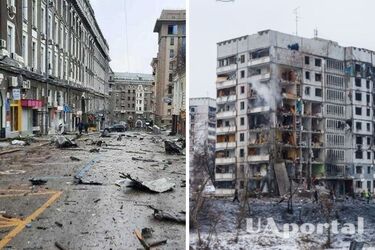Russia is destroying Kharkiv: is it possible to defend the city with modern air defense?

BLOG SOURCE
Kharkiv was, is, and remains one of the long-suffering cities in Ukraine free of occupation, and it is subject to daily missile attacks from Russia. After each such attack, the question arises: why is Kharkiv not covered by air defense like Kyiv, and is it possible to do so? And if so, what is needed for this?
Attacks on Kharkiv
For example, on January 23, Kharkiv experienced the arrival of a combined range of missile weapons of the Russian occupation forces, including X-22/32 missiles, which can be safely classified as indiscriminate weapons, 5B55 S-300 air defense systems of the same category, and 9M723 Tactical missile weapons.
From the first days of the full-scale invasion, the Russians terrorized Kharkiv with indiscriminate, chaotic shelling with cannon and rocket artillery. Northern Saltovka was turned into a second Mariupol. But back then, it was possible to counteract the occupiers either by counter-battery fighting or by gradually driving them out of the Kharkiv region.
Now, terror is carried out through the use of missile weapons or Shahed-131/136 kamikaze drones. The damage, especially to civilian objects, is enormous. The use of such missiles on Kyiv is likely to be repelled, which raises the question: is it possible to create the same echeloned air defense around Kharkiv?
To answer this question, it is necessary to understand what effectively counteracts how Russians terrorize the city.
Nomenclature of terror
As I mentioned above, Kharkiv is being attacked mainly with missiles of the 5B55 modification of the S-300, 9M723 Iskander and X-22/32. Almost all of these missiles cannot be intercepted by conventional short- and medium-range missiles, and the main means for this is the Patriot or SAMP/T.
A single battery of Patriot or SAMP/T systems could be enough to defend the city, covering not only Kharkiv itself but also the region and part of Russian airspace. That is, having the ability to shoot down missiles even over the territory of the Russian Federation. This is partly true, but there are nuances.
If we're talking about X-22/32 missiles, Patriot or SAMP/T systems can shoot them down only theoretically, as no confirmed cases have been recorded. The Russians launch these missiles at regions where Patriot or SAMP/T systems are not on combat duty, and therefore it has not yet been possible to confirm the theory in practice.
The 9M723 Iskander missiles, as it turned out, click like seeds for Patriot or SAMP/T SAMs, and they are not a problem for them. Almost all ballistic missiles headed for Kyiv are shot down with a 100% probability. But the dilemma is that with 9M723 launches, this missile has 200 km to fly to Kyiv and all systems have time to respond to the threat, but Kharkiv is 20-25 km from the Russian border. For 9M723, the approach time is 12 seconds.
The Patriot and SAMP/T are high-tech air defense systems, but even they cannot respond to a threat at such short distances and in such a short time. In addition, in this situation, they are not so much a means of defense as a target for hunting, as they are very vulnerable to ballistic missile attacks.
As Kyiv's experience has shown, missiles of the 5B55 modification of the S-300 air defense system can also be shot down by the aforementioned air defense systems, but in the case of Kharkiv, the issue of approach and response time arises.
Their speed is almost similar to 9M723. But the S-300 has another advantage that the Iskander doesn't have: quantity. They are much more numerous and can be used by the Russian air defense forces much more frequently, which, even in the case of successful interceptions, will deplete the air defense system. At some point, there will simply not be enough SAMs for air defense or not at all.
Therefore, if systems capable of intercepting the above-mentioned missiles are deployed in the Kharkiv area, they will not so much protect the city from attacks as, without critically changing the situation, jeopardize the air defense systems themselves, the destruction of which is a given for the Russian occupiers.
Shahed-131/136 raids are a separate category, but even here, Kharkiv's proximity to the border with Russia makes the city vulnerable. In such conditions, it is very difficult to respond promptly and intercept even a kamikaze drone flying at 150-180 km/h. Mobile interception teams destroy "chessmen" at the limit of their capabilities, taking into account the limited maneuver at a distance. In this case, the use of short-range air defense systems such as Alvis Stormer, Crotale, Gepard, and others is more effective.
On the other hand, Kharkiv can be protected from missile attacks not only by air defense but also by destroying the carriers/launchers that carry these threats in the direction of the city. However, this option is not within the scope of air defense, but of completely different units, so it is not entirely appropriate to consider it now.
Conclusions
Unfortunately, no matter how cynical it may sound, echeloned air defense similar to that deployed in Kyiv will not help Kharkiv. No matter how many Patriot or SAMP/T batteries are deployed in the city, they will not work effectively because of the minimum distances to Russia and the insufficient time to react and intercept the target.
It is possible (and quite realistic) to increase the level of security against kamikaze drones by expanding the range of short-range air defense systems. But otherwise, Kharkiv will be vulnerable to terrorist missile attacks until the end of the war. And it's not a given that it won't be even afterward, given the Russians' manic weakness for provocations.

